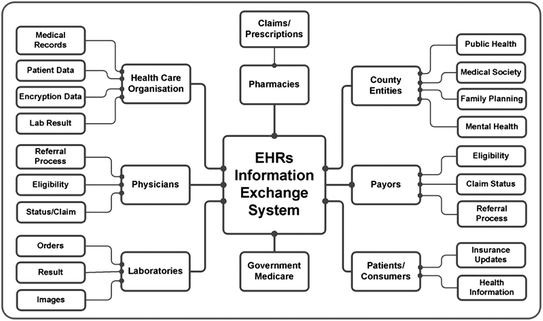
The failure was not only due to technology design and inefficiencies, but also to poor training and implementation. These problems then made it very difficult to obtain buy-in from the physicians, which ultimately caused several hundred physicians employed at Cedars to refuse to use the system after only 3 months. This flaw was a result of not obtaining adequate physician input for the EMR system and not enough prior testing. The system was implemented with numerous decision support mechanisms, which created alerts that could not be overridden by physicians. Not only was the new system more time-consuming, but it also alerted physicians with numerous electronic reminders and alerts that the physicians felt were excessive. Physicians often found themselves spending extra time to avoid the system's warnings because there was not room for flexibility within the EMR system. The physicians were unhappy because of the new physician order entry system for medications, labs and procedures was more time-consuming than doing the orders by hand. For example, in 2002, Cedars-Sinai Medical Center in Los Angeles, CA attempted to implement a new EMR system, but the US$34 million system failed due to numerous factors. Some systems have successful experiences, while others do not have as seamless of a transition. Implementation ĮMR implementation experiences among hospitals and healthcare delivery systems vary. Furthermore, adoption has increased most among large hospitals and those in urban areas. Meanwhile, the number of hospitals at Stages 0, 1, 2, and 3 has decreased. The EMR Adoption Model shows that in 2011, the number of acute care hospitals achieving Stage 5 or Stage 6 increased by more than 80 percent. Stage 0 implies “All three ancillaries not installed,” while in Stage 7 there is a shift to complete EMR.

The HIMSS Analytics Database shows the eight stages of adoption in their United States EMR Adoption Model. Though the adoption of electronic medical records is increasing, there is a range in the level of implementation. This is followed by a “big bang” implementation, which means all the departments transfer to the system at once, due to the interconnectedness of hospitals this is necessary. The first stage of implementation is called “design, build, validate,” where the vendor is selected and the plans are put in place. The length of time it takes to implement electronic medical records can vary but usually takes two to three years. Sentara Healthcare was able to make their selection by looking for a vendor with high outpatient care integration, technical support at all levels of integration, and one that customized a system to their needs. There are several criteria for deciding the vendor. If the system is larger, the decision is made at the corporate level, though several people from the hospitals remain involved. If an organization only has one hospital, the hospital leaders select the vendor. The decision of choosing an EMR vendor like Epic or Meditech can fall on either hospital leadership or the corporate level based on the size of the system. The key suppliers of health data systems are Epic Systems, Allscripts, Meditech, Cerner, IBM, McKesson, Siemens, Healthland, CPSI, and GE Healthcare. Hospitals have been using different suppliers of health data systems in order to adopt electronic medical records.

There are several steps that need to be taken in order to adopt electronic medical records. This has led more hospitals to adopt EMR, though they have had different experiences in adopting electronic medical records. The Health Information Technology for Economic and Clinical Health Act portion of this stimulus law provides payments for providers that show they have reached the standard for “meaningful use”. Due to the enactment of the American Recovery and Reinvestment Act of 2009, there has been a rise in the number of federal investments in programs that increase EMR adoption.


 0 kommentar(er)
0 kommentar(er)
